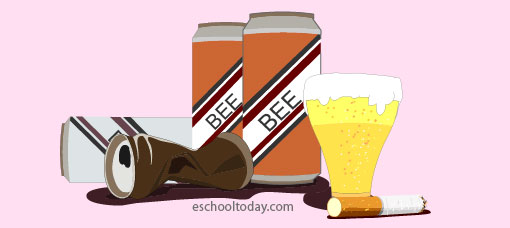| |
Drug types
There are 4 main categories of drugs. They include Stimulants, Depressants, Opioids/Pain Killers and Hallucinogens.

 Stimulants: Stimulants:
This category includes drugs that speed up the central nervous system resulting in increased neural activity. Substances in this category make people feel more alert, active, awake and euphoric. They may come in powder, pill or capsule form. Stimulants are addictive and can be very dangerous at high doses. Examples of stimulants include caffeine, cocaine, and ecstasy.
 Depressants: Depressants:
This category includes drugs that produce a sedative effect. These substances slow down the normal activity that goes on in the brain. They typically induce sleep or makes the user relaxed, mellow and calm. They are also known as downers or sedatives. Depressants include alcohol, valium, or sonata.
 Opium / Pain Killers: Opium / Pain Killers:
Substances in this category have euphoric effects on the brain. They produce a euphoric rush, followed by relaxation and pain relief. Drugs in this group include Morphine, Codeine, Heroin, and Fentanyl. Substances in this group can be very addictive and dangerous at high doses.
 Hallucinogens: Hallucinogens:
Just like the name suggests, this class of drugs causes hallucinations. It causes the user to have a distorted perception of reality. A user may experience intense emotional swings, hear sounds, see things and experience some feelings that are not real.
Did you know: Hallucinogens can be found in some plants and mushrooms!
 
|
|
